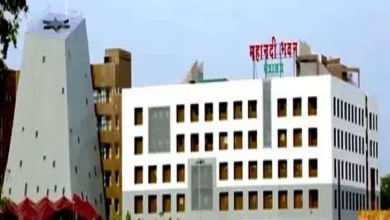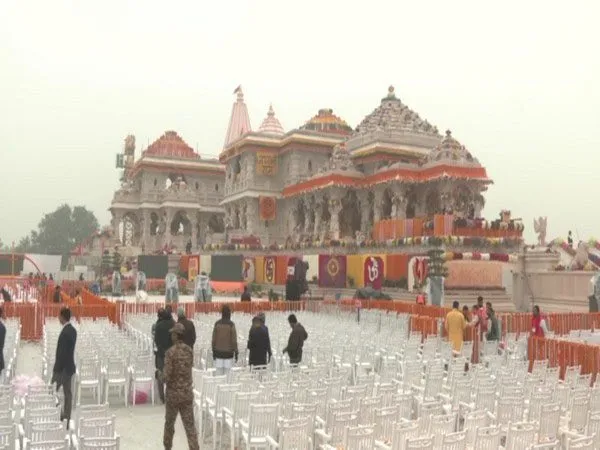ISRO will send the first Indian astronaut to the Moon by 2040

After the historic success of its lunar mission Chandrayaan-3, ISRO is accelerating its plans to send Indian astronauts to the Moon for the first time by 2040.
ISRO chief S Somnath said four test pilots from the Indian Air Force have been selected as designated astronauts for the mission.
Currently, they are undergoing mission-specific training at the Astronaut Training Center (ATF) in Bengaluru, said Somnath, who is also the Secretary of the Department of Space and Chairman of the Space Commission.
The inaugural NASA manned space mission involved the development of key technologies, including a launch vehicle suitable for humans (capable of safely transporting humans) (HLVM3), an orbital module consisting of a crew module (CM), and a module Service (SM) is included, included. and critical support systems. ,
In addition to the integrated air launch test flights, aborted test platform, and test vehicle flights, two similar unmanned missions (G1 and G2), will be preceded by the crewed mission.
The CM is a habitable space with an Earth-like space environment for the crew and is designed for safe re-entry. According to a statement issued by Malayala Manorama, safety measures also include a Crew Escape System (CES) for emergencies.
The first flight of the development test vehicle (TV-D1) was launched on 21 October 2023 and successfully demonstrated in-flight interruption of the crew escape system, followed by separation and recovery of the crew module. The Bay of Bengal is guarded by a part of the Indian Army.
It said Aditya L1, which is India’s first solar exploration mission, is also an important mission of ISRO.
The Sun will be studied from the unique vantage point of Lagrange Point 1, which reflects the country’s lack of expertise in both lunar and solar research.
Launched on September 2, Aditya L1 is designed for a five-year mission.
The spacecraft is on its projected trajectory towards Lagrange Point 1 (L1) of Sol-Tierra, approximately 1.5 million kilometers from Earth, where it will enter halo orbit in January 2024.
Regarding the success of the Chandrayaan-3 mission, he described it as “historic”, leading the Prime Minister to declare August 23 (lunar orbit around the lunar pole) as “National Space Day in India”.
During the 14-day terrestrial mission, it brought back valuable lunar data, discovering aluminum, calcium, iron, chrome, titanium, sulfur, manganese, silicon and oxygen in the lunar soil.
Referring to some of the ambitious ongoing and future missions, he said they include Small Satellite Launch Vehicle (SSLV), Reusable Launch Vehicle program (RLV), X-ray astronomy missions, Coupling Space Experiment and LOX of Methane. -Motor included.
“Together, these transformative initiatives define a new space story for India in exploring space exploration, promoting scientific progress and continuously expanding cosmic horizons”. Talking in depth, he said SSLV, a three-stage launch vehicle, can launch a 500 kg satellite into a 500 km flat orbit and can accommodate multiple satellites.
It has launch feasibility, low demand, minimal launch infrastructure requirements and low cost. With two flights in recent days, SSLV finds itself in the transition phase from development flights to operational flights.
Somnath further said that the Prime Minister has set ambitious objectives, such as operationalizing ‘Station Bharatiya Antriksh’ (Espatial India Station) by 2035 and an interplanetary exploration mission with a Venus orbiter and a module to land on Mars. launch. To further strengthen India’s presence in the world. Spatial view.
Expressing confidence that India’s space program will reach new heights in the coming years, he said that “with each mission launch and each discovery, ISRO reaffirms its position as a force on the global stage, generating national pride. and expands.”
After the historic success of its lunar mission Chandrayaan-3, ISRO is accelerating its plans to send Indian astronauts to the Moon for the first time by 2040.
ISRO chief S Somnath said four test pilots from the Indian Air Force have been selected as designated astronauts for the mission.
Currently, they are undergoing mission-specific training at the Astronaut Training Center (ATF) in Bengaluru, said Somnath, who is also the Secretary of the Department of Space and Chairman of the Space Commission.
The inaugural NASA manned space mission involved the development of key technologies, including a launch vehicle suitable for humans (capable of safely transporting humans) (HLVM3), an orbital module consisting of a crew module (CM), and a module Service (SM) is included, included. and critical support systems. ,
In addition to the integrated air launch test flights, aborted test platform, and test vehicle flights, two similar unmanned missions (G1 and G2), will be preceded by the crewed mission.
The CM is a habitable space with an Earth-like space environment for the crew and is designed for safe re-entry. According to a statement issued by Malayala Manorama, safety measures also include a Crew Escape System (CES) for emergencies.
The first flight of the development test vehicle (TV-D1) was launched on 21 October 2023 and successfully demonstrated in-flight interruption of the crew escape system, followed by separation and recovery of the crew module. The Bay of Bengal is guarded by a part of the Indian Army.
It said Aditya L1, which is India’s first solar exploration mission, is also an important mission of ISRO.
The Sun will be studied from the unique vantage point of Lagrange Point 1, which reflects the country’s lack of expertise in both lunar and solar research.
Launched on September 2, Aditya L1 is designed for a five-year mission.
The spacecraft is on its projected trajectory towards Lagrange Point 1 (L1) of Sol-Tierra, approximately 1.5 million kilometers from Earth, where it will enter halo orbit in January 2024.
Regarding the success of the Chandrayaan-3 mission, he described it as “historic”, leading the Prime Minister to declare August 23 (lunar orbit around the lunar pole) as “National Space Day in India”.
During the 14-day terrestrial mission, it brought back valuable lunar data, discovering aluminum, calcium, iron, chrome, titanium, sulfur, manganese, silicon and oxygen in the lunar soil.
Referring to some of the ambitious ongoing and future missions, he said they include Small Satellite Launch Vehicle (SSLV), Reusable Launch Vehicle program (RLV), X-ray astronomy missions, Coupling Space Experiment and LOX of Methane. -Motor included.
“Together, these transformative initiatives define a new space story for India in exploring space exploration, promoting scientific progress and continuously expanding cosmic horizons”. Talking in depth, he said SSLV, a three-stage launch vehicle, can launch a 500 kg satellite into a 500 km flat orbit and can accommodate multiple satellites.
It has launch feasibility, low demand, minimal launch infrastructure requirements and low cost. With two flights in recent days, SSLV finds itself in the transition phase from development flights to operational flights.
Somnath further said that the Prime Minister has set ambitious objectives, such as operationalizing ‘Station Bharatiya Antriksh’ (Espatial India Station) by 2035 and an interplanetary exploration mission with a Venus orbiter and a module to land on Mars. launch. To further strengthen India’s presence in the world. Spatial view.
Expressing confidence that India’s space program will reach new heights in the coming years, he said that “with each mission launch and each discovery, ISRO reaffirms its position as a force on the global stage, generating national pride. and expands.”





